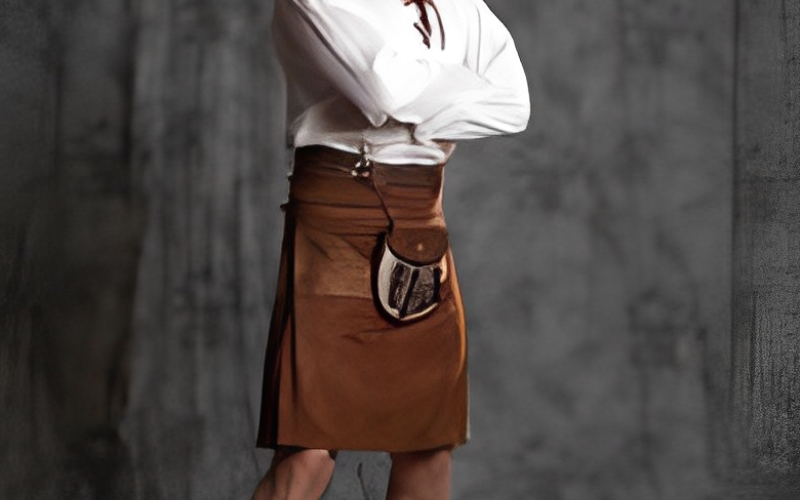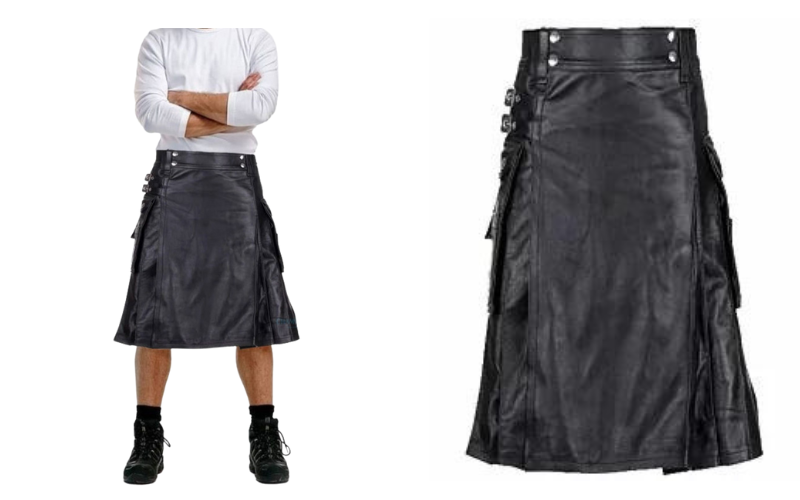Leather kilts are not just garments; they are timeless pieces that exude style and sophistication. Whether you wear one for traditional occasions or contemporary fashion statements, ensuring the proper storage of your leather kilt is paramount to maintaining its elegance. In this guide, we’ll delve into the intricacies of leather care, offering practical tips for storage and preservation.
Understanding Leather
Before we embark on the journey of proper storage, it’s crucial to understand the nature of the material. Leather kilts often come in various types, such as cowhide or lambskin. Each type demands specific care, and knowing your leather can significantly impact the longevity of your garment.
Key Factors for Proper Storage
Preserving your leather kilt requires meticulous care. Ensure controlled temperature and humidity levels, avoiding excessive moisture to prevent mold and extreme dryness that may lead to cracks. Store it in a cool, dry place away from direct sunlight. Before storage, clean your leather kilt using a soft, damp cloth to remove dirt.
Invest in a breathable garment bag for protection against dust, providing ventilation to maintain the pristine condition of your cherished garment. These practices, coupled with regular inspections and thoughtful maintenance, will extend the life and elegance of your leather kilt.
Folding and Hanging Techniques
Taking care of your leather kilt is an art, even when it comes to storage. When folding, treat it like a delicate treasure – soft, gentle folds to sidestep permanent creases. Leather is a natural material that demands finesse. If folding isn’t your thing, pick the perfect hanger to prevent stretching or distortion.
Opt for a well-ventilated space when hanging; it’s like letting your kilt breathe. Whether neatly folded or gracefully hung, these choices safeguard your leather kilt, ensuring it remains a timeless piece exuding elegance whenever you decide to flaunt it.
Additional Preservation Tips
Preserving the allure of your leather kilt involves more than just storage; it’s an ongoing commitment to its well-being. Whether neatly folded or elegantly hung, the care begins with understanding the nuances of your leather. Take note of the type – whether it’s robust cowhide or delicate lambskin – each requires tailored attention. When it’s time to store, shield it from dust using a breathable garment bag.
If you opt for folding, ensure soft, gentle folds to prevent permanent creases. Hanging requires the right hanger, maintaining shape without distortion. To avoid color transfer, store it separately from other materials. Regular inspections catch wear, tear, or damage early on, facilitating prompt repairs. Investing in quality leather conditioners ensures suppleness, with sparing application per product instructions. These details weave a tapestry of care, ensuring your leather kilt remains a timeless symbol of elegance.
Long-Term Storage Solutions
When your leather kilt takes a hiatus, thoughtful storage becomes crucial. For extended non-use, favor a garment storage box, adding a moisture-absorbing packet to prevent potential moisture-related problems. Opt for breathable materials like cotton in storage boxes to facilitate air circulation, steering clear of plastic containers that may trap moisture and invite mold growth.
This meticulous approach during periods of non-use safeguards your leather kilt, ensuring it emerges from storage as resplendent as when you last wore it. It’s a small investment in time that pays off in preserving the enduring elegance of your cherished garment.
Traveling with a Leather Kilt
When your leather kilt ventures beyond your wardrobe, take measures for its safe travels. Employ compact folding techniques, gently rolling the kilt to minimize wrinkles. Additionally, invest in a travel-friendly garment bag crafted specifically for leather garments. These bags act as protective shields during transit, guarding against potential mishaps.
Whether you’re heading to a traditional gathering or a contemporary event, ensuring your leather kilt arrives in impeccable condition adds a touch of assurance to your journey. Traveling with style is not just about the destination; it’s about the journey, and your leather kilt deserves to arrive as gracefully as you do.

Common Mistakes to Avoid
To ensure the longevity of your leather kilt, it’s crucial to sidestep common pitfalls. Avoid storing it in areas prone to excessive moisture or dryness, such as basements or attics, which can compromise the leather’s quality. When it comes to cleaning, steer clear of harsh agents that may strip the leather of its natural oils. Opt for mild, leather-friendly cleaners to maintain the material’s integrity.
Neglecting regular inspections and maintenance is a cardinal sin in leather care. By regularly examining your leather kilt, you can catch any signs of wear, tear, or damage before they escalate, facilitating timely repairs and preserving your cherished garment’s pristine condition.
These simple precautions and attentive practices ensure that your leather kilt remains a timeless symbol of sophistication, resisting the effects of time and wear with grace.
Conclusion
Properly storing your leather kilt is an investment in its longevity and continued elegance. By understanding the intricacies of leather care, adhering to thoughtful storage practices, and avoiding common pitfalls, you can ensure that your leather kilt remains a timeless piece in your wardrobe. Take the time to care for your garment, and it will reward you with enduring style for years to come.
FAQs
If you any additional queries you can get an eye on this section.
1. How should I store my leather kilt to prevent damage?
Store your leather kilt in a cool, dry place away from direct sunlight. Consider using a breathable garment bag for added protection.
2. Can I hang my leather kilt?
Yes, you can. Use the right hanger to prevent stretching and distortion, and ensure it’s stored in a well-ventilated area.
3. What cleaning agents should I avoid for my leather kilt?
Avoid harsh cleaning agents that may strip the leather of its natural oils. Opt for mild, leather-friendly cleaners.
4. How often should I inspect my leather kilt for signs of wear or damage?
Regularly inspect your leather kilt for signs of wear or damage. Early detection allows for prompt repairs and maintenance.
5. Is it safe to travel with my leather kilt?
Yes, it is. Use compact folding techniques or a travel-friendly garment bag to minimize wrinkles and ensure your leather kilt arrives in impeccable condition.




Leave a reply